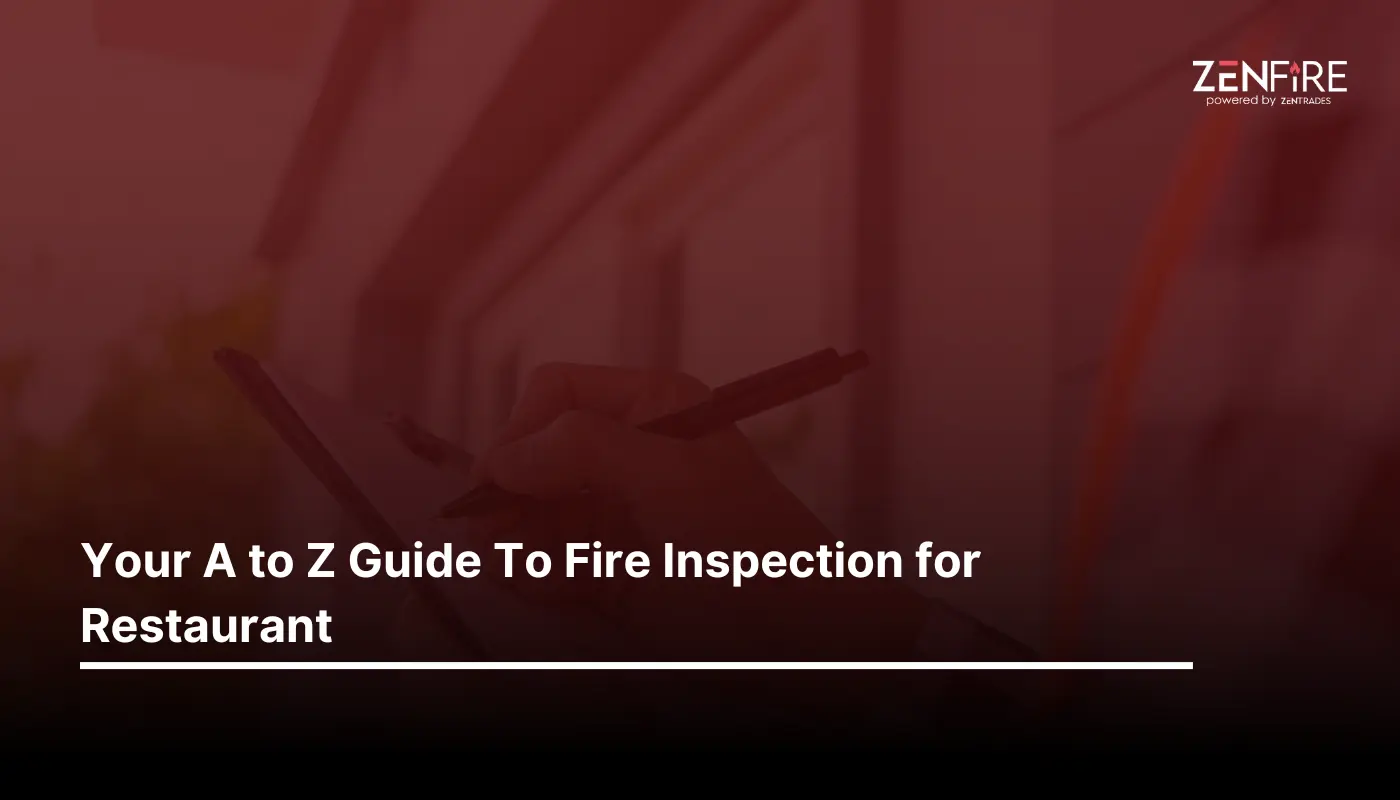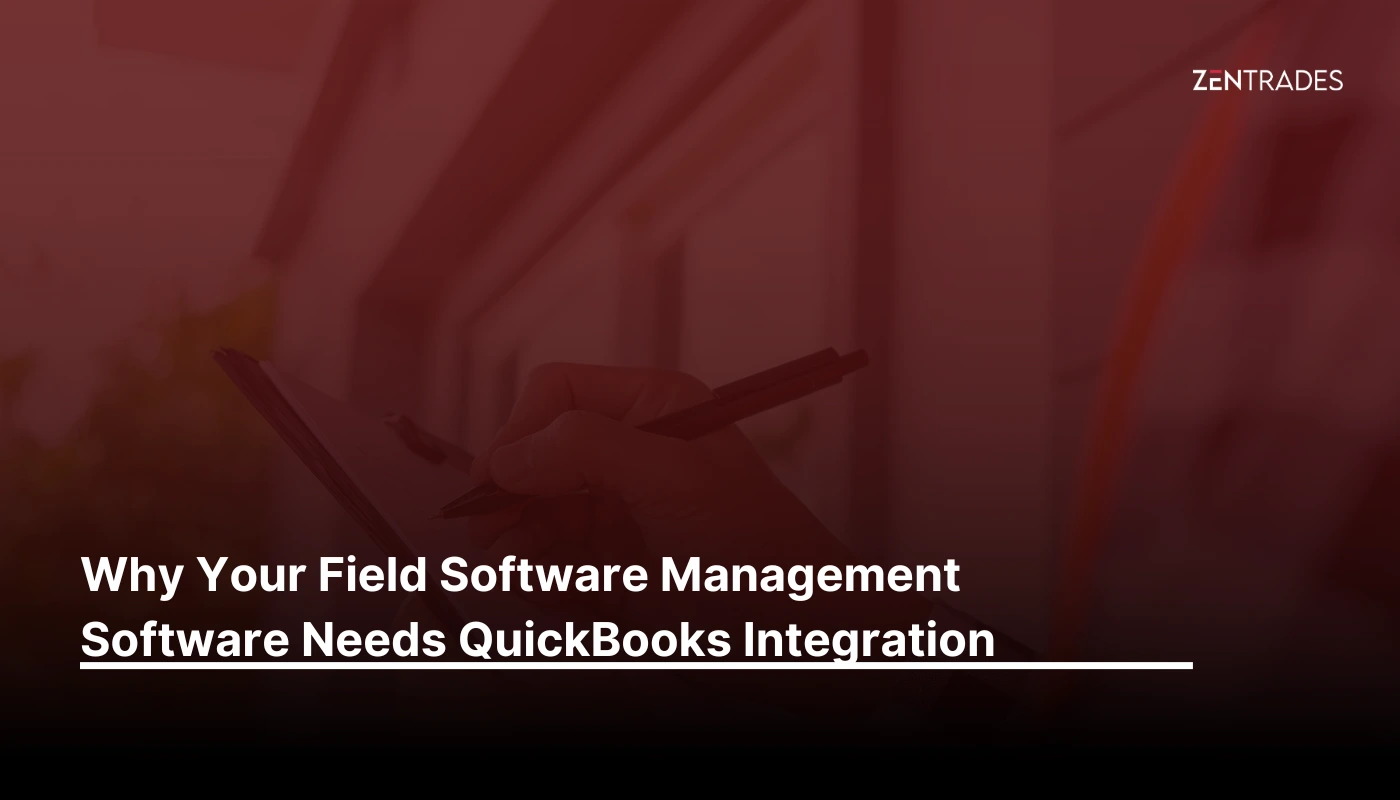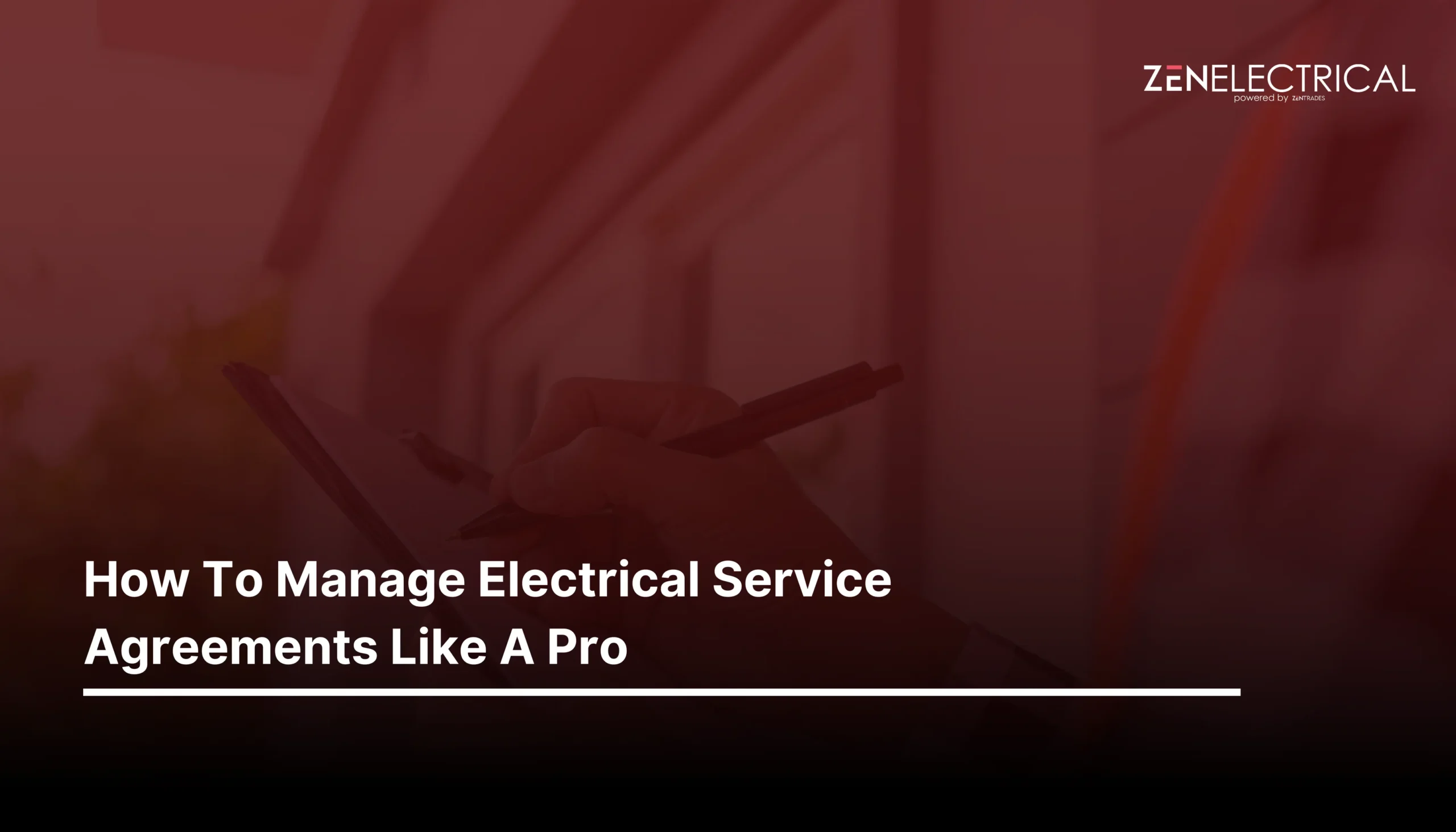Your A to Z Guide To Fire Inspection for Restaurant
- Field Service Management
- 9 Min Read
The frequency at which people are choosing to have their meal outside is increasing. As a result, businesses in the food market are witnessing exponential growth, almost double the present value in the next decade. According to Fortune Business Insights, it is projected to grow from $905.13 billion in 2023 to $1,767.54 billion by 2030.
This means restaurant business owners should focus on more than just food; they should also consider the safety and security of every individual present.
When we talk about guaranteeing the fire safety of customers and employees at a restaurant, it becomes imperative to tick off a thorough fire inspection by a certified fire inspector, as per the codes and regulations of the National Fire Protection Association.
In this blog, we aim to provide an overall guide on conducting a proper fire safety inspection for restaurants, mitigating any risk of an accidental fire, and creating a safe environment for customers, employees, and business premises.
Here What We Cover
Understanding Restaurant Fire Safety Regulations And Protection Systems
Before proceeding with the safety inspection of your restaurant, consider your building’s total occupant load. Your restaurant’s safety codes depend on its occupancy type and load.
If you have a small restaurant with a capacity of not more than 50 people, it is considered mercantile occupancy. A medium—to large-sized restaurant, on the other hand, is viewed as an assembly occupancy.
Mercantile occupancies generally need lesser fire protection systems and requirements than assembly occupancies. The vital difference between these two types of occupancies is the egress rules.
Occupant loads can help you determine what fire protection systems are needed to ensure the safety of your business.
But regardless of your restaurant’s size and occupant load, you should keep your basic fire protection equipment in place. Fire inspectors from your local fire authority pay extra attention to essential fire safety and prevention tools, such as smoke and fire alarms, portable extinguishers, and fire sprinklers placed inside.
In most cases, eating and drinking establishments follow the same regulations and local codes as your local fire department to ensure fire safety, so you don’t have to worry about having food or your drink in peace.

Use our free estimate template now
Make winning quotes in minutes—for any industry and any job.
Ensuring Fire Safety At Restaurants
Restaurant fire inspection is crucial for guaranteeing fire safety, protection, and prevention for your food business.
Setting the seal on having well-grounded fire safety at your restaurant ensures that you adhere to your local fire department and keep your equipment ready for emergencies. That includes your alarm systems, fire sprinkler systems, ventilation control, portable fire extinguishers, and, last but not least, your exhaust system.
Ensuring a robust fire safety protection and prevention system at your restaurant can ease your customers’ and employees’ minds, considering your establishment a secure and safe place from accidental fires.
Hence, always make sure you have proper fire safety regulations and protection systems for your business.
One example is placing fire protection systems at various parts of your restaurant, which can help minimize the chance of probable grease-laden vapors that could prove fatal for everyone present. Keeping fire safety equipment in check can reduce grease fires caused by commercial cooking operations, avoiding direct property damage, loss of lives, and threats to mankind.
As a business owner, you should take proper measures to make your establishment fireproof and up to the standards and regulations of the NFPA. These measures can range from preventive measures in the kitchen for fire safety to ensuring electrical safety, regulating smoking policies, and proper staff training on operating protection equipment and appliances in case of a fire emergency.
Most importantly, adhere to your building codes and regulations covering maximum occupancy limits, exit requirements, fire alarm systems, fire extinguisher placement, and emergency lighting.
Your local fire inspectors will thoroughly check the kitchen equipment, including your cooking equipment, and fire safety systems, including the fire sprinkler system, fire extinguishing equipment, fire alarm, kitchen hood, and other areas under their inspection codes.

Areas To Be Inspected During Restaurant Fire Inspection
During a thorough inspection of restaurants, the fire marshal will ensure that prime areas are properly inspected in accordance with fire safety regulations.
Key areas inspected by the fire inspector during restaurant fire inspection:
Kitchen Ventilation and Suppression System
This includes exhaust fans, duct paths, and filters, but mainly grease traps, which can prevent grease buildups that pose a significant fire hazard.
Cooking Equipment
Appliances such as stoves, gas burners, ovens, grills, fryers, etc., are adequately maintained. Cooking equipment should and must adhere to protocols and safety standards set by authorities.
Electrical Systems
The fire inspector will inspect all electrical appliances, wiring, switches, and outlets and try to identify potential hazards like overloaded circuits and faulty wires.
Fire Extinguishers and Alarms
Your fire inspector will check the placement of your fire extinguishers and the types available for the possible fire accidents that can prevail. Your fire alarms should be properly working and detected at the right time. It should also include heat and smoke detectors and other notification devices.
Emergency Exits
Fire exits should be marked and ensured that they are unobstructed and easily available in emergencies. The pathways to the door should be well-lit and allow smooth evacuation.
Storage Rooms
storage areas should avoid stockpiling of flammable substances like cooking oils or other greasy materials to avoid the risk of an accidental fire.
These are some definite areas that the fire inspector will inspect to ensure fire protection for your restaurant, enhance fire safety, and minimize the risk of unintentional fires.
Apart from these, the fire inspector will examine the overall scenario of your restaurant, such as tidiness and ensuring no accumulation of debris can hinder the evacuation process.
Your staff and employees should be well-trained in using safety equipment and assisting individuals in the evacuation process.
Challenges With Flat Rate Pricing
There are a few potential disadvantages of flat rate pricing to consider as well. One is that it can sometimes be challenging to set the right price. Customers may choose a competitor over you if the price is too high. Hence Flat rate pricing can be difficult to implement effectively, as it requires meticulous planning and analysis.
Another potential downside is that flat rate pricing can sometimes be inflexible. If costs go up or down, the business may be unable to adjust its prices accordingly. This could lead to lost sales or revenue.
There are also cases when to meet customer expectations; you might have to over-deliver on a project without any extra compensation, which may include a certain number of changes or revisions during the job. But you won’t get any extra money for the work.
Now that you know both sides of the coin, let us move to the important question.
Get posts like this in your inbox.
Keep learning how to run a 5-star business with our bi-weekly newsletter.
Placing An Efficient Fire Extinguishing System
An efficient fire extinguishing system can make restaurants very customer-friendly and decrease your chances of incurring loss due to property damage.
Basic measures should be taken to ensure basic safety at eating establishments, such as having an efficient fire extinguishing system.
Assess your restaurant space and identify the areas prone to risks. These areas could be anywhere from your kitchen to your electrical board. You also need to estimate the types of fires that are most likely to occur.
Various extinguishers are available in the market, considering the different types of fires. Purchase your extinguishers accordingly and place them strategically, adhering to local fire safety regulations and making sure you adequately cover every area of the restaurant.
Regularly inspect your extinguishers to ensure they are in working condition.
Install suppression systems in high-risk areas like your kitchen that can be triggered automatically by heat sensors or manually when necessary.
Having a kitchen hood suppression system is a must, as open flames are very common in commercial kitchens and should be prevented as soon as possible.
Don’t forget about the smoke alarms and detectors!
Smoke detectors and alarms should be placed throughout the restaurant to warn customers before a potential fire hazard occurs. Interlink them all for enhanced protection.
Last but not least, have regular maintenance checks for fire extinguishing equipment. And do make sure that all your systems comply with local fire safety regulations and building codes.
Keep all your documents and records handy to showcase compliance with regulations.
How Frequently Should You Have Restaurant Fire Inspections?
Fire inspections for restaurants are usually recommended at least once every year. While most restaurants can adhere to that, some need frequent inspections based on their level of risk, such as semi-annual or quarterly inspections, for example, an establishment conducting large cooking operations. The frequency of these inspections can vary depending on local regulation standards, the restaurant size, occupant load, equipment used by the restaurant, and other factors.
So make sure that you check your area’s regulations for restaurant fire inspections and familiarise yourself with any additional rules and recommendations from fire safety professionals to ensure better safety for everyone.

Explore a better way to grow your business. Book a free demo now!
Get organized, win jobs, and wow customers.
Book A Free Demo with ZenTrades Today!
Related Reading
Why Your Field Software Management Software Needs QuickBooks Integration
ZenTrades Why Your Field Service Management Software Needs QuickBooks Integration Read More Request Demo...
Read MoreZenTrades How To Manage Electrical Service Agreements Like...
Read MoreZenTrades The Best 5 Jobber Alternatives In 2023...
Read More

